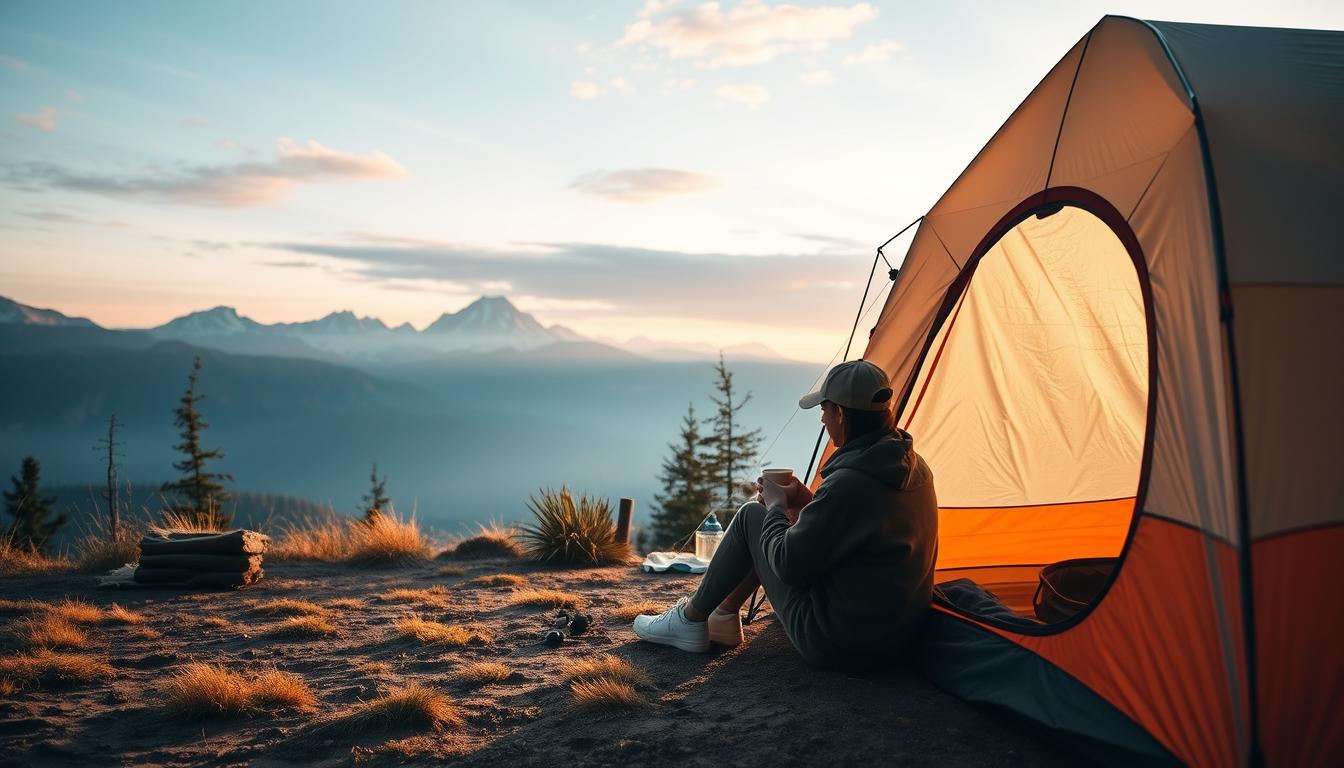The camping lifestyle represents more than just occasional weekend trips to the wilderness—it’s a mindset that embraces simplicity, connection with nature, and a break from our technology-saturated world. As urban environments become increasingly hectic, more people are discovering the profound benefits of making outdoor living a regular part of their lives. Whether you’re considering your first camping trip or looking to deepen your outdoor experiences, this guide will help you navigate the rewarding path of embracing the camping lifestyle.
What Is the Camping Lifestyle?
The camping lifestyle offers peaceful moments and stunning views that rejuvenate the spirit
The camping lifestyle encompasses more than just pitching a tent in the wilderness—it’s a philosophy that prioritizes outdoor experiences, simplicity, and connection with the natural world. For some, it means weekend escapes from city life; for others, it’s seasonal adventures or even full-time nomadic living. What unites all camping enthusiasts is the desire to step away from artificial environments and immerse themselves in nature’s rhythms.
In recent years, the camping lifestyle has seen remarkable growth. According to the 2023 North American Camping Report, first-time campers have increased by 64% since 2019, with millennials and Gen Z leading the charge. This surge reflects a growing recognition that regular outdoor experiences provide a necessary counterbalance to our increasingly digital lives.
The camping lifestyle can take many forms—from traditional tent camping to glamping, van life, or seasonal campground memberships. What matters isn’t how you camp, but rather the intentional choice to make nature a significant part of your life experience. Whether you’re escaping for weekends or embracing a more nomadic existence, the camping lifestyle offers a refreshing alternative to conventional living arrangements.
5 Key Benefits of the Camping Lifestyle
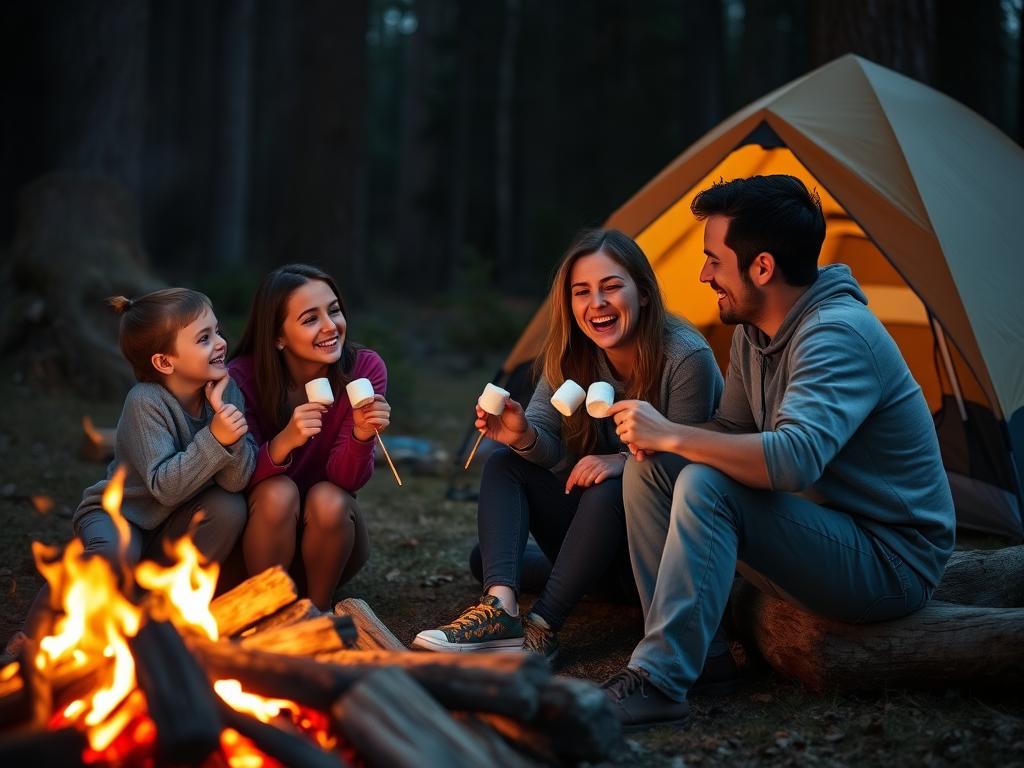
Camping creates lasting memories and strengthens family bonds
1. Mental Health and Stress Reduction
Perhaps the most profound benefit of the camping lifestyle is its positive impact on mental health. Research published in the International Journal of Environmental Research shows that spending just 20 minutes in nature significantly lowers stress hormone levels. Regular campers report improved mood, reduced anxiety, and better sleep quality. The combination of natural surroundings, reduced screen time, and physical activity creates a powerful remedy for modern stress.
2. Deeper Connection with Nature
Living the camping lifestyle fosters an intimate relationship with the natural world that’s impossible to achieve through occasional visits. You begin to notice subtle seasonal changes, wildlife patterns, and natural rhythms that most people miss. This connection nurtures environmental awareness and often inspires a more sustainable approach to daily life, even when you’re not camping.
3. Simplified Living and Reduced Consumption
Camping teaches us how little we truly need to be comfortable and happy. When you live with only essential gear, you naturally become more mindful of consumption patterns. Many camping enthusiasts find this simplicity so refreshing that they begin applying minimalist principles to their everyday lives, reducing clutter and focusing on experiences rather than possessions.
4. Enhanced Physical Health
The camping lifestyle naturally incorporates more physical activity into your routine. From setting up camp to hiking, swimming, or simply gathering firewood, outdoor living keeps your body moving. Fresh air, natural sunlight, and distance from pollution also contribute to improved respiratory health and immune function. Studies show that regular exposure to diverse natural environments strengthens our microbiome and overall health.
5. Stronger Social Connections
Without the distractions of technology and busy schedules, camping creates space for genuine human connection. Conversations around campfires, shared adventures, and collaborative problem-solving build deeper relationships. Many camping lifestyle enthusiasts report that their most meaningful friendships and family memories come from time spent outdoors together.
Essential Gear for Embracing the Camping Lifestyle
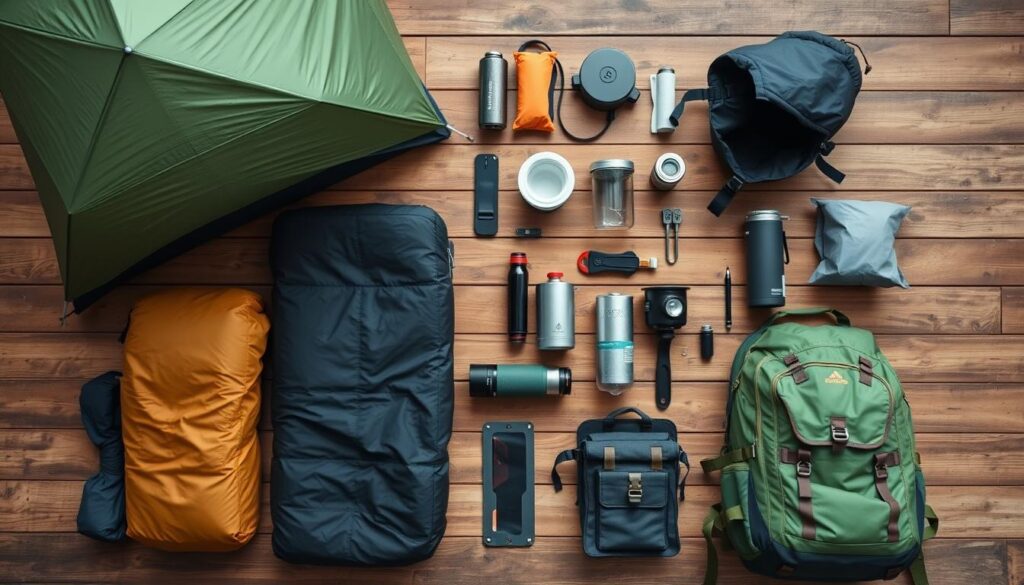
Quality gear forms the foundation of comfortable camping experiences
Building your camping kit doesn’t need to happen all at once. Start with these essentials and expand your collection as your camping lifestyle evolves:
Shelter and Sleeping
- Quality tent appropriate for your climate
- Weather-appropriate sleeping bag
- Sleeping pad or air mattress
- Pillow (camping-specific or from home)
- Optional: Tent footprint or tarp
Kitchen and Food
- Camping stove and fuel
- Cookware set (pot, pan, kettle)
- Eating utensils and dishes
- Cooler and ice packs
- Water storage container
- Coffee/tea making supplies
Clothing and Personal Items
- Moisture-wicking base layers
- Insulating mid layers
- Waterproof outer layer
- Sturdy footwear
- Hat for sun/cold protection
- Personal hygiene items
Tools and Safety
- First aid kit
- Multi-tool or knife
- Headlamp or flashlight with extra batteries
- Fire starting materials
- Navigation tools (map, compass, GPS)
- Emergency communication device
Ready to Build Your Camping Kit?
Start with quality basics that will last for years. Remember that good gear doesn’t always mean the most expensive—research and read reviews to find the best value for your needs.
Safety Precautions for the Camping Lifestyle
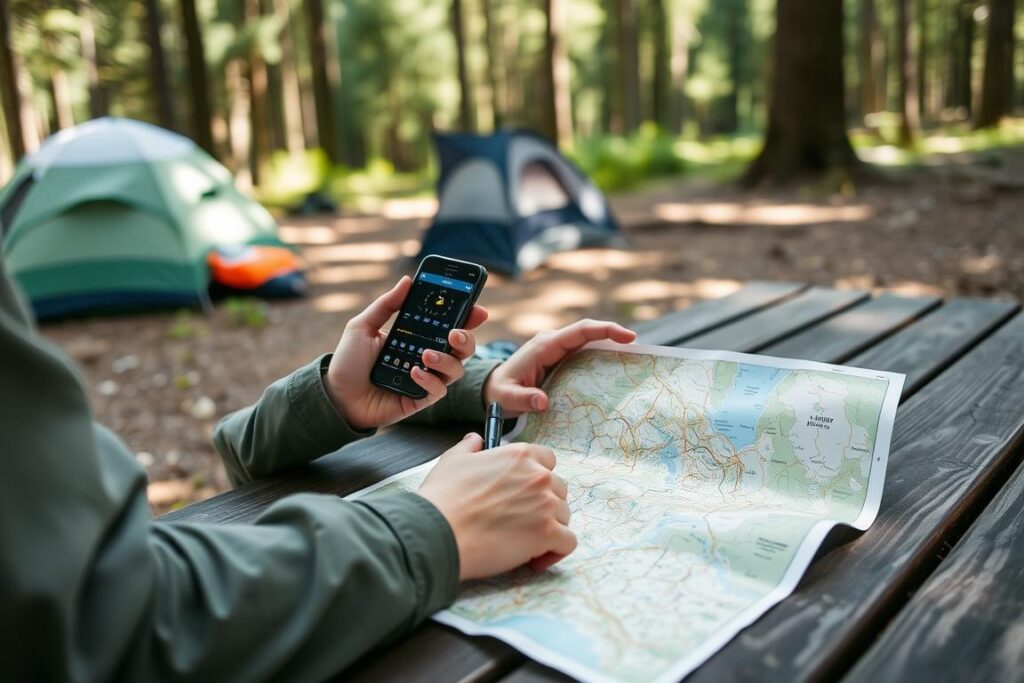
Proper planning and preparation are essential safety components
Safety should always be your priority when embracing the camping lifestyle. These precautions will help ensure your outdoor experiences remain positive:
Weather Awareness
Always check weather forecasts before departing and stay alert for changing conditions. Understand how to recognize signs of approaching storms, and have a plan for seeking shelter. Remember that weather in wilderness areas can change rapidly, especially in mountainous regions.
Wildlife Safety
Research the wildlife in your camping area and understand proper food storage techniques. In bear country, this means using bear canisters or hanging food properly. Maintain a clean campsite to avoid attracting animals, and know what to do if you encounter potentially dangerous wildlife.
Navigation and Communication
Never rely solely on electronic navigation. Carry physical maps and a compass, and know how to use them. Always share your itinerary with someone reliable who isn’t joining your trip, including expected return times. Consider carrying a satellite communicator in areas without cell service.
First Aid Knowledge
A well-stocked first aid kit is essential, but knowing how to use it is even more important. Consider taking a wilderness first aid course if you plan to camp frequently or in remote areas. Basic knowledge of treating common outdoor injuries can make a critical difference in emergency situations.
Important Safety Reminder: Always carry more water than you think you’ll need, and have a way to purify additional water. Dehydration is one of the most common and dangerous issues campers face.
Leave No Trace: The Camping Lifestyle Ethos

Responsible campers leave sites better than they found them
The camping lifestyle comes with a responsibility to protect the natural environments we enjoy. The Leave No Trace principles provide a framework for minimizing our impact:
Plan Ahead and Prepare
Research regulations, weather conditions, and terrain before your trip. Proper planning reduces the chance you’ll need to make decisions that impact the environment.
Travel and Camp on Durable Surfaces
Stay on established trails and campsites to avoid creating new impact areas. In pristine areas, spread out to prevent creating visible campsites.
Dispose of Waste Properly
Pack out all trash and leftover food. Use established bathroom facilities when available, or bury human waste 6-8 inches deep, 200 feet from water sources.
Leave What You Find
Preserve the past by observing but not touching cultural artifacts. Leave rocks, plants, and other natural objects as you find them.
Minimize Campfire Impact
Use established fire rings or a portable stove. Keep fires small, burn only small sticks found on the ground, and burn all wood completely to ash.
Respect Wildlife
Observe wildlife from a distance and never feed animals. Store food securely to protect wildlife and your food supply.
Be Considerate of Other Visitors
Respect other visitors by keeping noise levels down and yielding to others on trails. Let nature’s sounds prevail by avoiding loud voices and noises.
By following these principles, you help ensure that beautiful natural places remain pristine for future generations of camping enthusiasts. The camping lifestyle is sustainable only when we all commit to protecting the environments we love.
3 Unique Camping Lifestyle Approaches
Van Life Conversions: Mobility Meets Comfort
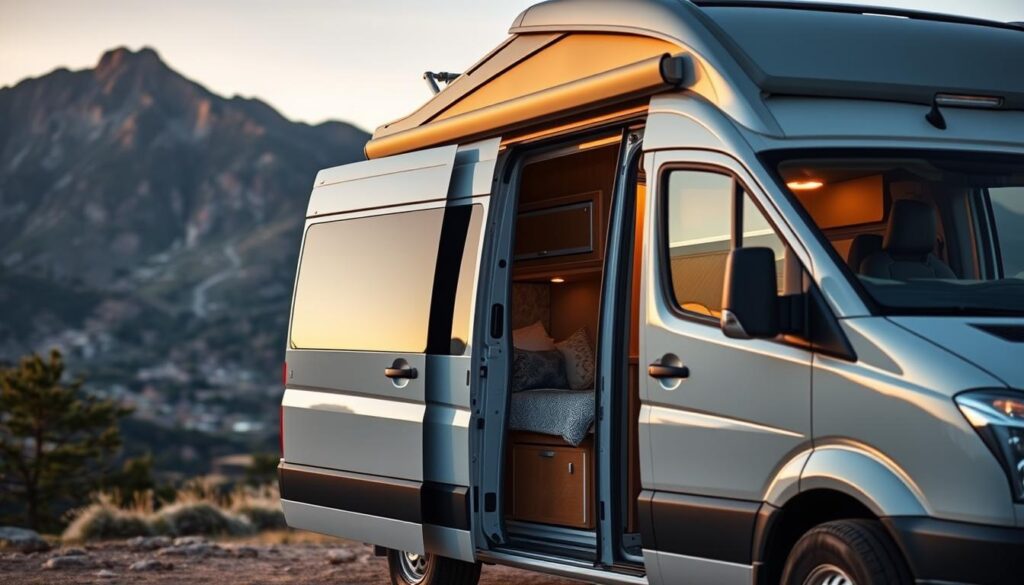
Van life offers the perfect blend of mobility and comfort
The van life movement has exploded in popularity as people seek the perfect balance between comfort and mobility. Converting a van into a living space allows you to follow favorable weather, work remotely from stunning locations, and access areas that larger RVs can’t reach.
Modern van conversions range from DIY budget builds to professional customizations with solar power, compact kitchens, and ingenious storage solutions. The van life approach to camping is ideal for those who want to travel extensively without sacrificing basic comforts like a proper bed and simple cooking facilities.
“Van life taught me to value experiences over possessions. Living with less in my van somehow gave me more life than I ever had in my apartment.”
— Alex Chen, Van Life Enthusiast since 2018
Glamping: Luxury in the Wilderness
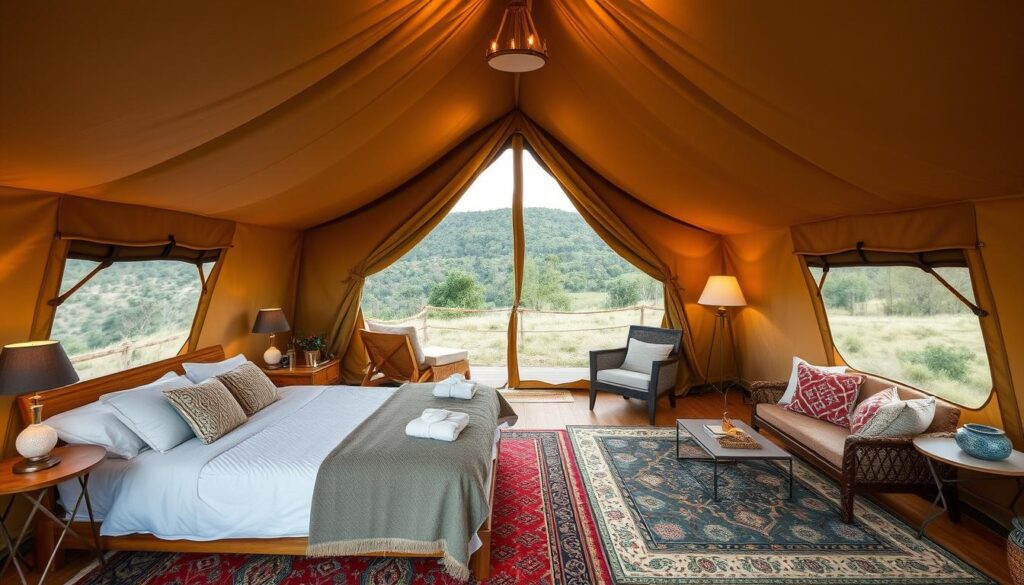
Glamping combines natural settings with luxurious accommodations
Glamping—glamorous camping—has redefined what outdoor living can look like. This approach maintains the connection with nature while eliminating many traditional camping discomforts. Glamping accommodations range from luxury tents with real beds to treehouses, yurts, and eco-pods with amenities like electricity, heating, and private bathrooms.
The glamping approach is perfect for those new to the camping lifestyle or for experienced campers looking to enjoy special occasions outdoors. It’s also an excellent way to introduce reluctant family members to nature without overwhelming them with too many changes at once.
Many glamping sites offer unique experiences like farm-to-table dining, outdoor spa services, or guided adventures, making them ideal for special celebrations or romantic getaways in natural settings.
Seasonal Camping: Building Community in Nature
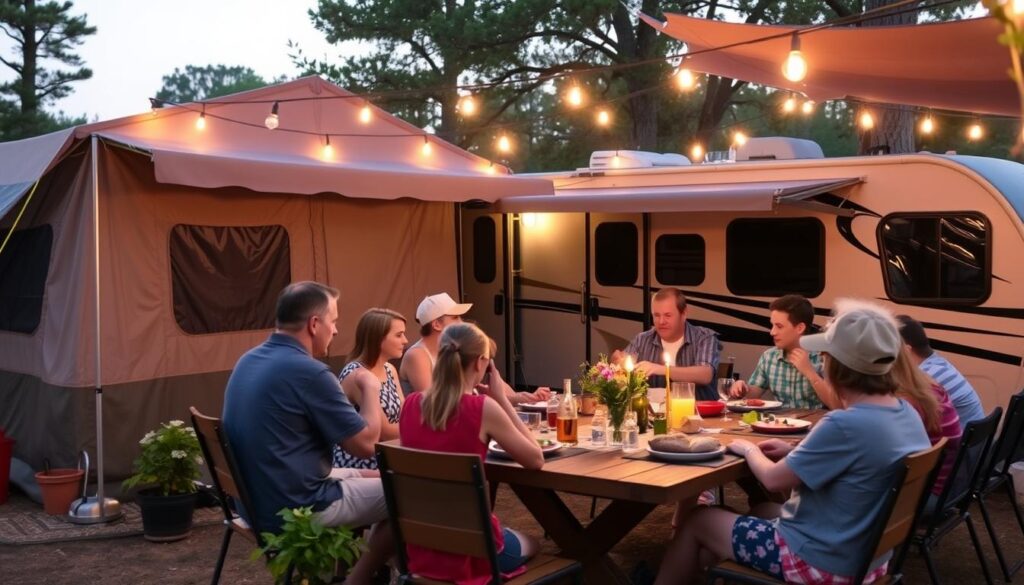
Seasonal camping creates lasting friendships and community connections
Seasonal camping involves securing a campsite for an extended period—typically a full season or even year-round—creating a second home in nature. This approach allows you to personalize your outdoor space with semi-permanent features like outdoor kitchens, garden areas, or custom seating areas.
The greatest benefit of seasonal camping is the community that forms among regular campers. Many seasonal campgrounds host events, potlucks, and activities that create lasting friendships. Children often form summer-long bonds, enjoying freedom to explore in a safe, familiar environment.
This camping lifestyle approach works well for families or individuals who want regular nature access without the logistics of setting up camp each time. Many seasonal campers use their sites as weekend retreats throughout the camping season, creating a perfect balance between everyday life and outdoor living.
Real-World Camping Lifestyle Communities
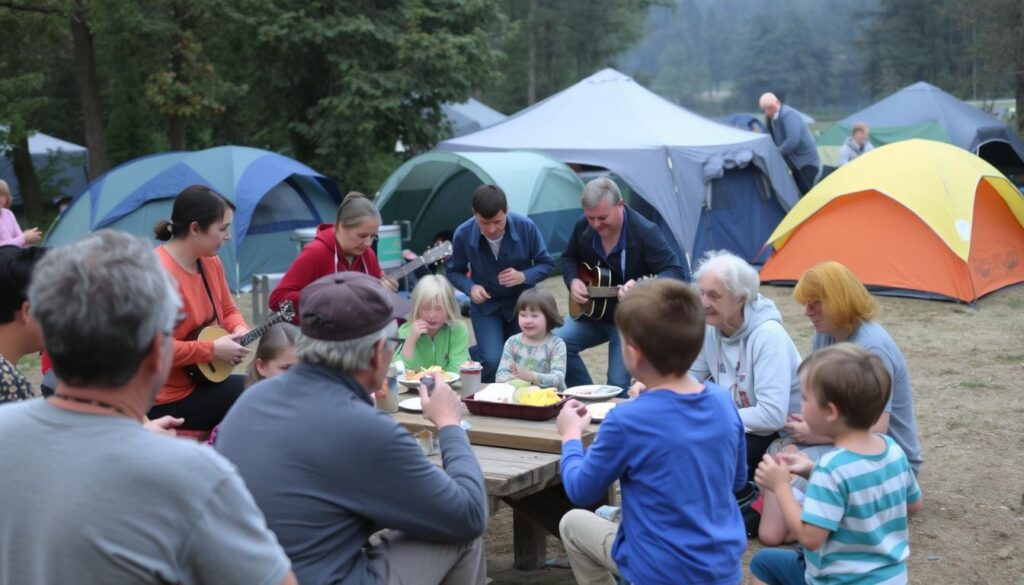
Camping communities create supportive networks for outdoor enthusiasts
Thousand Trails: Membership Camping Network
Thousand Trails represents one of the largest organized camping communities in North America, with over 80 campgrounds across the country. Members pay an annual fee for access to these preserves, many staying for weeks or months at various locations. The community aspect is strong, with organized activities, potlucks, and skill-sharing workshops that create a sense of belonging even as members travel between different preserves.
What makes Thousand Trails successful is its balance of structure and freedom. The organization maintains the campgrounds and schedules some activities, but there’s plenty of room for organic community development. Many members report forming “camping families” they reconnect with at different preserves throughout the year.
Nomadland Communities: Finding Home on the Road
Made famous by the book and film “Nomadland,” these loosely organized communities of full-time RVers and van dwellers gather at established meeting points throughout the year. The Rubber Tramp Rendezvous in Quartzsite, Arizona, is perhaps the most well-known, drawing thousands of nomadic campers each January for skill-sharing, socializing, and mutual support.
These communities operate on principles of mutual aid and knowledge exchange. Newcomers learn essential skills from experienced nomads, from solar power installation to finding free camping locations. Despite their transient nature, these communities maintain strong connections through social media and regular meetups.
Camp Grounded: Digital Detox Community
Taking a different approach to the camping lifestyle, Camp Grounded created intentional temporary communities focused on disconnection from technology and reconnection with nature and each other. Their adult summer camps banned digital devices and work talk, instead offering activities like archery, art, music, and meaningful conversation.
While the original Camp Grounded is no longer operating, it spawned numerous similar communities that continue its philosophy. These gatherings demonstrate how the camping lifestyle can be used intentionally to counter digital burnout and create meaningful human connections in natural settings.
Budget-Friendly Ways to Maintain a Camping Lifestyle
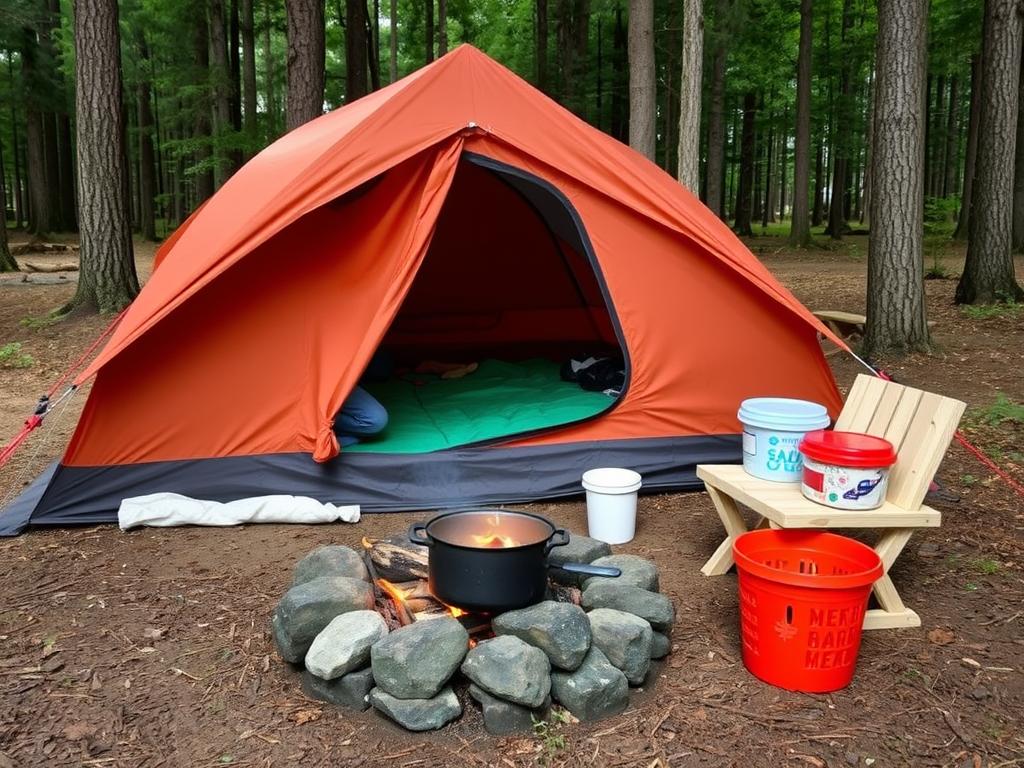
Creative solutions make the camping lifestyle accessible on any budget
Embracing the camping lifestyle doesn’t require expensive gear or luxury accommodations. These strategies will help you connect with nature regularly without straining your finances:
Gear Acquisition Strategies
- Buy once, buy right: Invest in quality for essential items like tents and sleeping bags, but choose mid-range options that balance durability and cost.
- Rent before you buy: Many outdoor retailers offer rental programs for expensive gear, letting you test before investing.
- Shop off-season: Purchase summer camping gear in fall/winter and winter gear in spring/summer for significant discounts.
- Consider used gear: Check outdoor gear swap meets, online marketplaces, and thrift stores for gently used equipment.
- DIY when possible: Make your own gear like camp stoves from soda cans, firestarters from dryer lint, or camp furniture from repurposed items.
Affordable Camping Locations
- National Forests and BLM land: These often offer free dispersed camping with 14-day stay limits.
- State Parks: Generally more affordable than private campgrounds with excellent facilities.
- Corps of Engineers campgrounds: Well-maintained waterfront camping at reasonable rates.
- County and city parks: Often overlooked but can offer affordable camping close to home.
- Membership programs: Organizations like Harvest Hosts or Boondockers Welcome offer free overnight stays in exchange for annual membership fees.
Food and Supplies
- Plan simple, filling meals: One-pot recipes reduce the need for extensive cooking gear.
- Use a cooler efficiently: Freeze water bottles to use as ice packs, then drink the water as they melt.
- Bring reusable items: Cloth napkins, durable plates, and washable utensils save money over disposables.
- Shop at local markets: Support local economies and get fresh produce when camping in rural areas.
- Carry a water filter: Reduce the need to buy bottled water by filtering from natural sources when safe.
Budget Tip: Create a camping fund by setting aside a small amount each week. Even $10-20 weekly adds up to enough for several weekend trips or one longer adventure each year.
Common Questions About the Camping Lifestyle
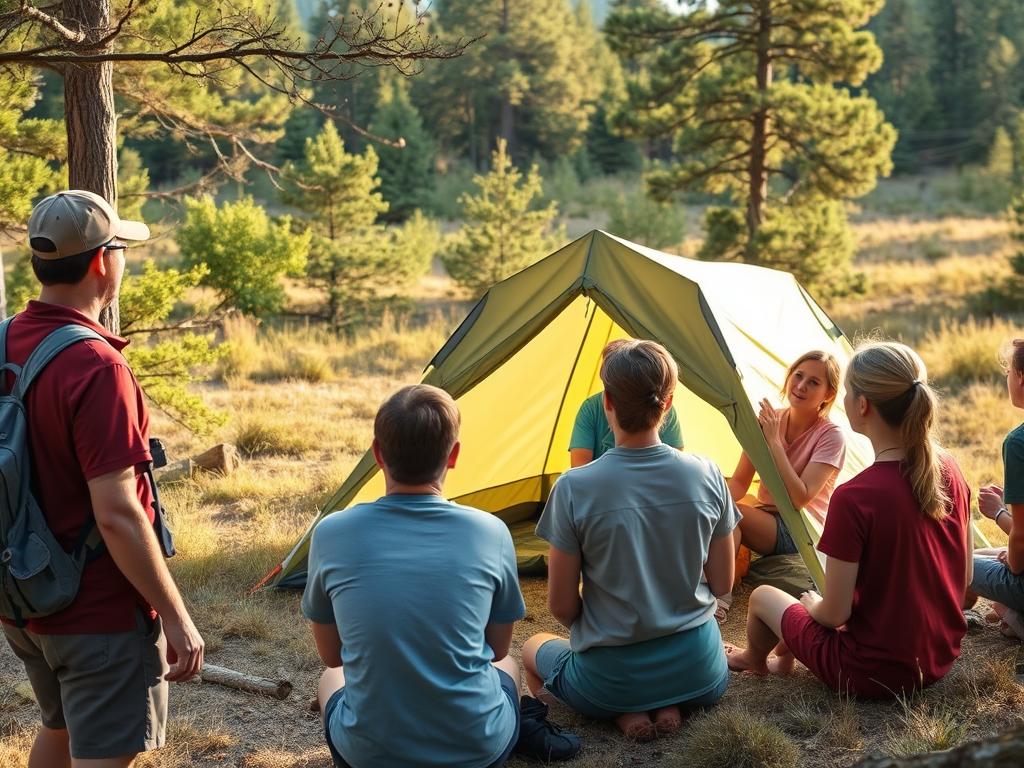
Learning from experienced campers accelerates your camping journey
How do I stay clean while camping for extended periods?
Maintaining hygiene during extended camping trips requires some adaptation. Biodegradable soap, portable solar showers, and quick-dry microfiber towels are essential. Many campgrounds offer shower facilities, but for more remote camping, wet wipes, dry shampoo, and hand sanitizer become valuable. Consider bringing a collapsible basin for washing clothes and dishes. Remember that natural bodies of water should never be directly contaminated with soap, even biodegradable varieties.
Can I work remotely while living a camping lifestyle?
Absolutely! Many people combine remote work with the camping lifestyle. Success depends on reliable internet access, power solutions, and creating a comfortable workspace. Options include camping at locations with Wi-Fi, using cellular hotspots with signal boosters, or planning work sessions at nearby libraries or cafés. Solar panels or portable power stations keep devices charged. The key is planning your camping locations around connectivity needs and establishing a consistent work routine despite changing environments.
How do I handle extreme weather while camping?
Handling extreme weather starts with preparation and the right gear. For hot weather, choose breathable clothing, camp in shaded areas, and plan activities for cooler morning and evening hours. In cold conditions, layer clothing properly, use appropriate sleeping bags, and know how to recognize hypothermia symptoms. For rain, ensure your tent is properly seam-sealed, use a ground tarp, and pack quick-dry clothing. Most importantly, check weather forecasts regularly and be willing to change plans or seek shelter when conditions become dangerous.
Is camping safe for solo travelers?
Solo camping can be very safe with proper precautions. Choose established campgrounds for your first solo trips before venturing into more remote areas. Always share your itinerary with someone reliable, including expected check-in times. Trust your instincts about locations and people you encounter. Consider carrying a personal safety device like a whistle or satellite communicator. The camping community is generally very supportive, and many solo campers find they’re never truly alone unless they choose to be.
How do I find like-minded camping friends?
Finding camping companions is easier than ever with social media and dedicated apps. Look for local outdoor groups on platforms like Meetup or Facebook. Attend camping workshops or classes at outdoor retailers. Volunteer for trail maintenance or conservation projects to meet fellow outdoor enthusiasts. Camping-specific apps like The Dyrt or Hipcamp often have community features. Don’t be afraid to strike up conversations at campgrounds—sharing tips and stories around campfires is a time-honored tradition that often leads to lasting friendships.
Your Camping Lifestyle Journey Begins Now
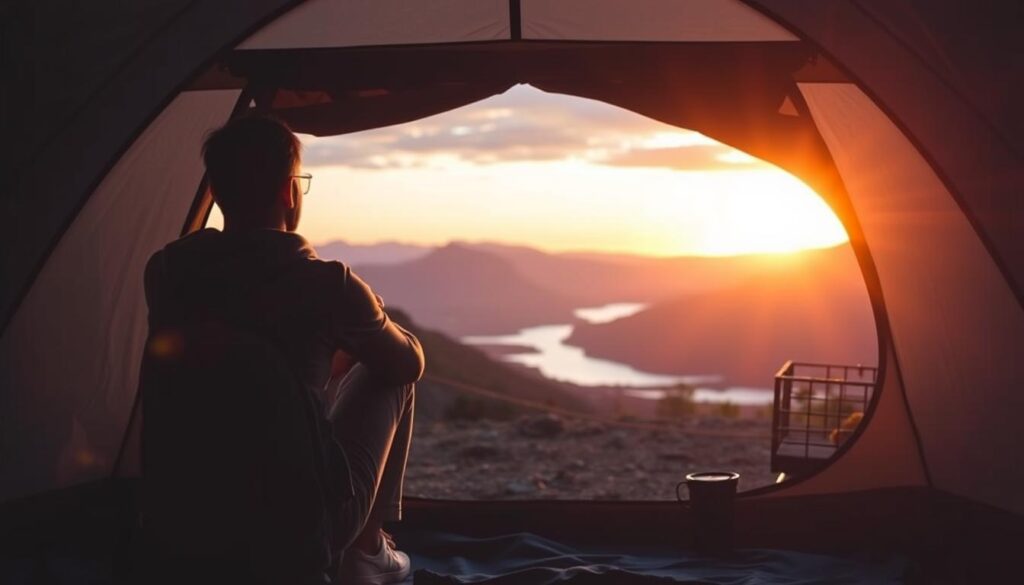
Every camping journey begins with a single step into nature
The camping lifestyle offers a refreshing counterbalance to our fast-paced, technology-driven world. Whether you choose weekend escapes, seasonal adventures, or a more nomadic existence, regular connection with nature provides benefits that ripple through all aspects of life—improved mental health, stronger relationships, and a deeper appreciation for our natural world.
Remember that embracing the camping lifestyle is a journey, not a destination. Start with what feels comfortable, learn from each experience, and gradually expand your outdoor skills and confidence. There’s no right or wrong way to camp—only what works for you and brings you joy.
The most important step is the first one: planning that initial camping trip. Even a simple weekend at a nearby campground can open the door to a lifetime of outdoor adventures and meaningful connections with nature and fellow campers.
Ready to Start Your Camping Lifestyle?
Begin with a simple weekend trip to a nearby campground. Pack the essentials, bring your sense of adventure, and take that first step toward a more nature-connected life.

